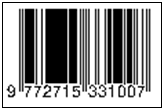Role of Endoscopic Procedure in Foreign Body (Button Battery) Ingestion in Children: A Case Report
DOI:
https://doi.org/10.35790/msj.v5i2.46219Abstract
Abstract: Foreign body (FB) ingestion is a common problem especially in children below the age of 5 years. Due to the extensive use of batteries as power supply in electronic gadgets, cases of button battery ingestion have become more common. If a button battery was found in the stomach of a child under the age of five, it should be assessed for esophageal injury and removed endoscopically, if at all possible, within 24 to 48 hours. We reported a 3-year-old boy who swallowed a foreign body three hours before being admitted to the hospital. Initially the patient was playing with robot toys that used batteries, then a battery of the robots was accidently swallowed. The patient had no symptoms and physical examinations showed no abnormalities. Abdominal X-ray examination revealed a foreign body located in the stomach. The patient underwent endoscopic foreign body removal but no foreign body was found until the second part of duodenum. Therefore, an exploratory laparotomy was performed, and the foreign body, a button battery, was removed from the ileum. In conclusion, since endoscopic foreign body removal failed to remove the foreign body in this patient, an exploratory laparotomy was performed and through antimesenterial ileotomy, the foreign body, a button battery, was successfully removed.
Keywords: foreign body; endoscopic foreign body removal; exploratory laparotomy
References
Diaconescu S, Gimiga N, Sarbu I, Stefanescu G, Olaru C, Ioniuc I, et al. Foreign bodies ingestion in children: experience of 61 cases in a pediatric gastroenterology unit from Romania. Gastroenterol Res Pract. 2016;2016:1982567. Doi: 10.1155/2016/1982567.
Gan RWC, Nasher O, Jackson PB, Singh SJ. Diagnosis of button battery ingestion by “halo” radiographic sign: an exception to the rule. BMJ Case Rep. 2015;2015:bcr2015209908. Doi: 10.1136/bcr-2015-209908.
Wallace B, Landman MP, Prager J, Friedlander J, Kulungowski AM. Button battery ingestion complications. J Pediatr Surg Case Reports. 2017;19:1e3.
Yardeni D, Yardeni H, Coran AG, Golladay ES. Severe esophageal damage due to button battery ingestion: Can it be prevented? Pediatr Surg Int. 2004;20(7):496-501. Doi: 10.1007/s00383-004-1223-6.
Thomson M, Sharma S. The hazards of button battery ingestion. Arch Dis Child. 2015;100(11):1010-1. Doi: 10.1136/archdischild-2015-308313.
Jatana KR, Litovitz T, Reilly JS, Koltai PJ, Rider G, Jacobs IN. Pediatric button battery injuries: 2013 task force update. Int J Pediatr Otorhinolaryngol. 2013;77(9):1392-9.
Kramer RE, Lerner DG, Lin T, Manfredi M, Shah M, Stephen TC, et al. Management of ingested foreign bodies in children: A clinical report of the NASPGHAN endoscopy committee. J Pediatr Gastroenterol Nutr. 2015;60(4):562-74. Doi: 10.1097/MPG.0000000000000729.
Sharieff GQ, Brousseau TJ, Bradshaw JA, Shad JA. Acute esophageal coin ingestions: Is immediate removal necessary? Pediatr Radiol. 2003;33(12):859-63. Doi: 10.1007/s00247-003-1032-4. .
Sharpe SJ, Rochette LM, Smith GA. Pediatric battery-related Emergency Department visits in the United States, 1990-2009. Pediatrics. 2012;129(6):1111-7. Doi: 10.1542/peds.2011-0012.
Mirshemirani A, Khaleghnejad-Tabari A, Kouranloo J, Sadeghian N, Rouzrokh M, Roshanzamir F, et al. Clinical evaluation of disc battery ingestion in children. Middle East J Dig Dis. 2012;4(2):107-10.
Lisi G, Illiceto MT, Romeo EF, Lauriti G, Faraci S, Lombardi G, et al. Esophageal retained lithium battery in children younger than 6 years: A prompt structured multidisciplinary approach is essential to reduce long-term consequences. Pediatr Emerg Care. 2021;37(6):e295-e300.
Krom H, Visser M, Hulst JM, Wolters VM, Van den Neucker AM, de Meij T, et al. Serious complications after button battery ingestion in children. Eur J Pediatr. 2018;177(7):1063-70. Doi: 10.1007/ s00431-018-3154-6
Rosenfeld EH, Sola R, Yu Y, St. Peter SD, Shah SR. Battery ingestions in children: variations in care and development of a clinical algorithm. J Pediatr Surg. 2018;53(8):1537-41.
El‐Barghouty N. Management of disc battery ingestion in children. Br J Surg. 1991;78(2):247.
Simonin M, D’Agostino I, Lebreton M, Jughon O, Hamza J, Oualha M. Bilateral vocal palsy following coin cell lithium battery ingestion: a case report and review. Eur J Pediatr. 2013; 172(7):991-3. Doi: 10.1007/s00431-012-1899-x
Kieu V, Palit S, Wilson G, Ditchfield M, Buttery J, Burgner D, et al. Cervical spondylodiscitis following button battery ingestion. J Pediatr. 2014;164(6):1500.
Litovitz T, Whitaker N, Clark L, White NC, Narsolek M. Emerging battery-ingestion hazard: clinical implications. Pediatrics. 2010;125(6):1168-77. Doi: 10.1542/peds.2009-3037.
Downloads
Published
How to Cite
Issue
Section
License
Copyright (c) 2023 Harsali Lampus, Candy Candy, Leo Rendy, Andy A. Rangan

This work is licensed under a Creative Commons Attribution-NonCommercial 4.0 International License.
COPYRIGHT
Authors who publish with this journal agree to the following terms:
Authors hold their copyright and grant this journal the privilege of first publication, with the work simultaneously licensed under a Creative Commons Attribution License that permits others to impart the work with an acknowledgment of the work's origin and initial publication by this journal.
Authors can enter into separate or additional contractual arrangements for the non-exclusive distribution of the journal's published version of the work (for example, post it to an institutional repository or publish it in a book), with an acknowledgment of its underlying publication in this journal.
Authors are permitted and encouraged to post their work online (for example, in institutional repositories or on their website) as it can lead to productive exchanges, as well as earlier and greater citation of the published work (See The Effect of Open Access).










